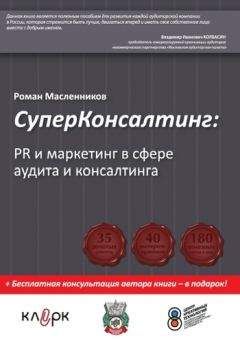Томас Лис - Психология переговоров. Как добиться большего
114
Lerner J. S., Keltner D. Fear, anger, and risk // Journal of personality and social psychology. – 2001. – 81(1). – P. 146.
115
Adler R. S., Rosen B., Silverstein E. M. Emotions in Negotiation: How to Manage Fear and Anger // Negotiation Journal. – 1998. – № 14(2). – P. 161–179; Allred K. G. Anger and Retaliation: Toward an Understanding of Impassioned Conflict in Organizations // Research on Negotiation in Organizations. – 1999. – № 7. – P. 27–58; Thompson L. L. The Truth about Negotiations. – Upper Saddle River, NJ: Pearson Education, 2008.
116
Daly J. P. The effects of anger on negotiations over mergers and acquisitions // Negotiation Journal. – 1991. – № 7(1). – P. 31–39.
117
Carnevale P. J. Positive affect and decision frame in negotiation // Group Decision and Negotiation. – 2008. – № 17(1). – P. 51–63.
118
Barsade S. G. The ripple effect: Emotional contagion and its influence on group behavior // Administrative Science Quarterly. – 2002. – № 47(4). – P. 644–675; Forgas J. P. On feeling good and getting your way: mood effects on negotiator cognition and bargaining strategies // Journal of personality and social psychology. – 1998. – № 74(3). – P. 565; Lyubomirsky S., King L., Diener E. The benefits of frequent positive affect: Does happiness lead to success? // Psychological bulletin. – 2005. – № 131(6). – P. 803.
119
Sinaceur M., Tiedens L. Z. Get mad and get more than even: The benefits of anger expressions in negotiations // Journal of Experimental Social Psychology. – 2006. – № 42. – P. 314–322.
120
Van Kleef G. A., De Dreu C. K. W., Manstead A. S. R. The interpersonal effects of anger and happiness in negotiations // Journal of Personality and Social Psychology. – 2004. – № 86. – P. 57–76.
121
Sinaceur M., Vasiljevic D., Neale M. Surprise Expression in Group Decisions: When an Emotional Expression Affects the Quality of Group Members’ Processing and Decision Accuracy. – Working paper, INSEAD, Fountainbleau, France, 2014.
122
Pugh S. D. Service with a smile: Emotional contagion in the service encounter // Academy of management journal – 2001. – № 44(5). – P. 1018–1027; Kopelman S., Rosette A. S., Thompson L. The three faces of Eve: Strategic displays of positive, negative, and neutral emotions in negotiations // Organizational Behavior and Human Decision Processes. – 2006. – № 99(1). – P. 81–101.
123
Emerson R. M. Power-dependence relations // American sociological review. – 1962. – № 27. – Р. 31–41.
124
Keltner D., Gruenfeld D., Anderson C. Power, approach and inhibition // Psychological Review. – 2003. – № 10. – P. 265–285.
125
Magee J. C., Galinsky A. D., Gruenfeld D. H. Power, propensity to negotiate, and moving first in competitive interactions // Personality and Social Psychology Bulletin. – 2007. – № 33(2). – P. 200–212.
126
Woodward B. State of Denial. – New York: Simon and Schuster, 2006.
127
Gruenfeld D. H., Inesi M. E., Magee J. C., Galinsky A. D. Power and the objectification of social targets // Journal of personality and social psychology. – 2008. – № 95(1). – P. 111.
128
Mannix E. A., Neale M. A. Power Imbalance and the Pattern of Exchange in Dyadic Negotiation // Group Decision and Negotiation. – 1993. – № 2(2). – P. 119–133.
129
Galinsky A. D., Chou E., Halevy N., Van Kleef G. A. The Far Reaching Effects of Power: At the Individual, Dyadic, and Group Levels // Research on Managing Groups and Teams, vol. 15: Looking Back, Moving Forward / Margaret A. Neale, Elizabeth A. Mannix (Eds.). – Bringley, UK: Emerald Publishing, 2013. – P. 185–207.
130
Belmi P., Neale M. Mirror, mirror on the wall, who’s the fairest of them all? Thinking that one is attractive increases the tendency to support inequality // Organizational Behavior and Human Decision Processes. – 2014. – № 124(2). – P. 133–149.
131
Carney D. R., Cuddy A. J., Yap A. J. Power posing brief nonverbal displays affect neuroendocrine levels and risk tolerance // Psychological Science. – 2010. – № 21(10). – P. 1363–1368. См. также выступление Эми Кадди (Amy Cuddy) на конференции TED: www.ted.com/talks/amy_cuddy_your_body_language_shapes_who_you_are.html.
132
Tiedens L. Z., Unzueta M. M., Young M. J. An unconscious desire for hierarchy? The motivated perception of dominance complementarity in task partners // Journal of Personality and Social Psychology. – 2007. – № 93(3). – P. 402.
133
Kiesler D. J. The 1982 interpersonal circle: A taxonomy for complementarity in human transactions // Psychological Review. – 1983. – № 90(3). – P. 185; Wiggins J. S. A psychological taxonomy of trait-descriptive terms: The interpersonal domain // Journal of Personality and Social Psychology. – 1979. – № 37(3). – P. 395; Wiggins J. S. Circumplex models of interpersonal behavior in clinical psychology // Handbook of research methods in clinical psychology / P. S. Kendall, J. N. Butcher (Eds.). – New York: Wiley, 1982. – P. 183–221.
134
Carson R. C. Interaction Concepts of Personality. – Oxford, UK: Aldine, 1969; Horowitz L. M., Locke K. D., Morse M. B., Waikar S. V., Dryer D. С, Tarnow E., Ghannam J. Self-Derogations and the Interpersonal Theory // Journal of Personality and Social Psychology. – 1991. – № 61(1). – P. 68; Horowitz L. M., Wilson K. R., Turan B. Z. P., Constantino M. J., Henderson L. How Interpersonal Motives Clarify the Meaning of Interpersonal Behavior: A Revised Circumplex Model // Personality and Social Psychology Review. – 2006. – № 10. – P. 67–86; Kiesler D. J. The 1982 Interpersonal Circle: A Taxonomy for Complementarity in Human Transactions // Psychological Review. – 1983. – № 90(3). – P. 185.
135
Blumberg S. R., Hokanson J. E. The Effects of Another Person’s Response Style on Interpersonal Behavior in Depression // Journal of Abnormal Psychology. – 1983. – № 92(2). – P. 196; Horowitz L. M., Wilson K. R., Turan B. Z. P., Constantino M. J., Henderson L. How Interpersonal Motives Clarify the Meaning of Interpersonal Behavior: A Revised Circumplex Model // Personality and Social Psychology Review. – 2006. – № 10. – P. 67–86; Markey P. M., Funder D. C., Ozer D. J. Complementarity of Interpersonal Behaviors in Dyadic Interactions // Personality and Social Psychology Bulletin. – 2003. – № 29(9). – P. 1082–1090.
136
Wiltermuth S. S., Tiedens L. Z., Neale M. A. The Benefits of Dominance Complementarity in Negotiations // Negotiations and Conflict Management Research. (В печати.)
137
Carroll J. S., Bazerman M. H., Maury R. Negotiator Cognitions: A Descriptive Approach to Negotiators’ Understanding of Their Opponents // Organizational Behavior and Human Decision Processes. – 1988. – № 41(3). – P. 352–370; Prietula M. J. Weingart L. R. Negotiation as Problem Solving // Advances in Managerial Cognition and Organizational Information Processing. – 1994. – № 5. – P. 187–213.
138
Tiedens L. Z., Unzueta M. M., Young M. J. An Unconscious Desire for Hierarchy? The Motivated Perception of Dominance Complementarity in Task Partners // Journal of Personality and Social Psychology. – 2007. – № 93(3). – P. 402.
139
Levitt S. D. Understanding Why Crime Fell in the 1990s: Four Factors That Explain the Decline and Six That Do Not // Journal of Economic Perspectives. – 2004. – № 18(1). – P. 163–190.
140
Hall J. A., Coats E. J., LeBeau L. S. Nonverbal Behavior and the Vertical Dimension of Social Relations: A Meta-Analysis // Psychological Bulletin. – 2005. – № 131(6). – P. 898.
141
Подробнее см.: Chartrand T. L., Maddux W. W., Lakin J. L. Beyond the Perception-Behavior Link: The Ubiquitous Utility and Motivational Moderators of Nonconscious Mimicry // The New Unconscious / R. R. Hassin, J. S. Uleman, J. A. Bargh (Eds). – New York: Oxford University Press, 2005. – P. 334–361.
142
Bernieri F. J. Coordinated Movement and Rapport in Teacher-Student Interactions // Journal of Nonverbal Behavior. – 1988. – № 12(2). – P. 120–138; см. также: LaFrance M. Nonverbal Synchrony and Rapport: Analysis by the Cross-Lag Panel Technique // Social Psychology Quarterly. – 1979. – № 42. – P. 66–70; LaFrance M. Posture Mirroring and Rapport // Interaction Rhythms: Periodicity in Communicative Behavior / M. Davis (Ed.). – New York: Human Sciences Press, 1982. – P. 279–298.
143
Van Baaren R. B., Holland R. W., Steenaert B., Van Knippenberg A. Mimicry for Money: Behavioral Consequences of Imitation // Journal of Experimental Social Psychology. – 2003. – № 39(4). – P. 393–398.
144




